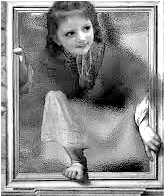
I used to think that the Golden Ratio was a mysterious mathematical thing that would show us some basic mechanism by which the universe is organized, but on digging a little deeper, I found that the concept has been challenged or debunked in almost all areas in which it has been cited.
The Golden Ratio is defined as two quantities whose ratio is the same as the ratio of their sum to the larger of the two quantities. It is symbolized by the Greek letter phi. As with pi, the numerical value of phi is one that goes on without end: 1.6180339887…, often rounded to 1.618. It has been observed and theorized about since before the time of Euclid around 300 B.C.E. when it came out of the study of geometry, particularly from pentagons and pentagrams.
It is believed that the Golden Ratio defines a perspective providing the highest level of beauty in the world. It is therefore a consideration of artists and architects in their work and has been claimed as an element in many buildings and pictures.
The ratio is often described with a picture of a nautilus shell or with Leonardo da Vinci’s drawing of a man with limbs splayed in a circle and a square (Vitruvian man). These connections have been questioned as have the connections to the Parthenon, the Pyramids, the Mona Lisa and many other things.
Sources vary on the truth or falsehood of many applications of the Golden Ratio, but they seem more accepting with respect to the world of plants and flowers. Petals and seeds arrange themselves in a way that reflects the Golden Ratio, petals to get the most sun and moisture, and seeds in order to pack more of them into a small space.
Regardless of the uncertainties in its applications, the Golden Ratio gets put to use in many modern situations. People have even used it to assess stock market movements and prices of individual stocks. One theory is that once a stock has s significant increase or decrease, its resistance (to increasing) and support (against decreasing) levels will be at or hear the Golden Ratio.
And then there is the human body. There is evidence to suggest that what we perceive as beauty in men and women is associated with how closely the proportions of facial and body dimensions cone to the Golden Ratio. Face, body, fingers, and even DNA have been cited as embodying the ratio.
Dr. Julian Da Silva, a leading facial plastic surgeon in London, uses computer mapping techniques for measuring facial features. He has applied the Golden Ratio to facial measurements of some famous people and rated their attractiveness. Among women he finds the most attractive faces belong to Bella Hadid, Beyonce´, Amber Heard, Ariana Grande, Taylor Swift, Kate Moss, Scarlett Johansson, Natalie Portman, Katy Perry, and Cara Delevingne. Comparable study of men produced this list: Robert Pattinson, Henry Cavill, Bradley Cooper, George Clooney, David Beckham, Iris Elba, Kanye West, and Ryan Gosling.